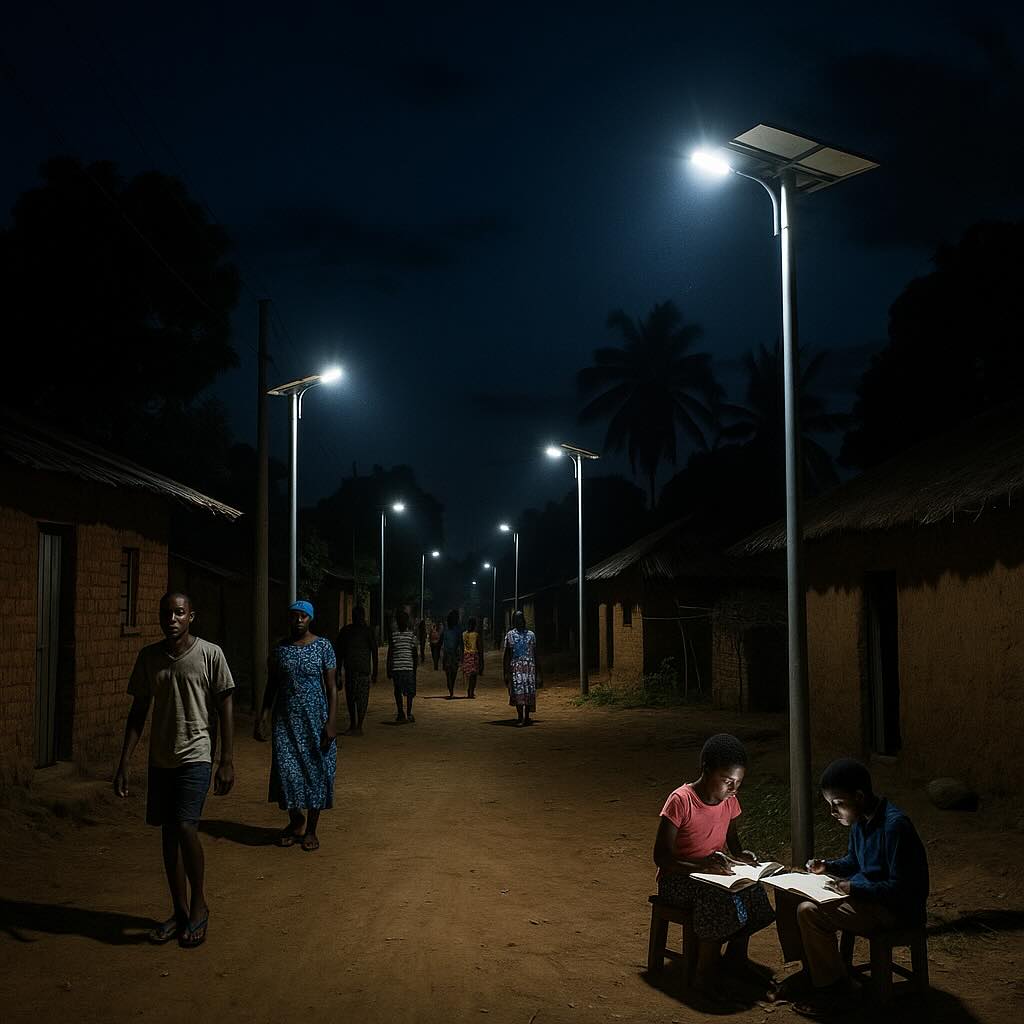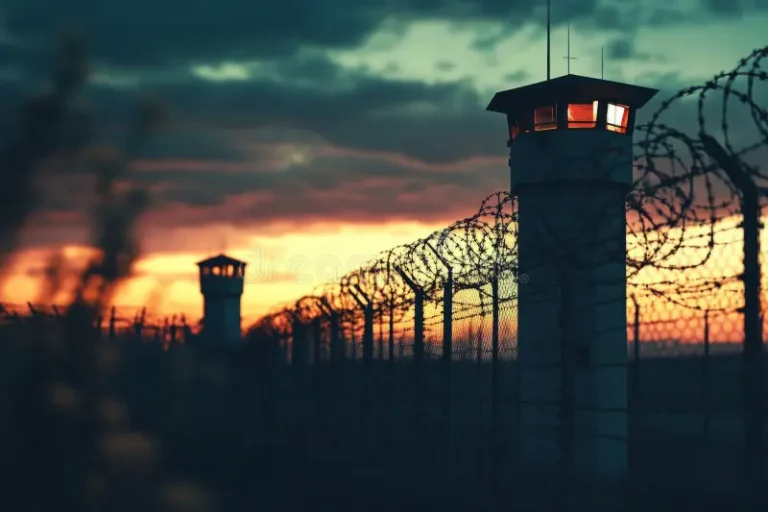Goma’s Community-Led Energy Justice Project Lights the Path to Liberation
Solar Power Lights the Path to Liberation in Goma, Democratic Republic of Congo—and this revolutionary project proves that renewable energy justice isn’t just possible, it’s powerful. As communities worldwide struggle against corporate polluters and extractive industries, Nuru’s 1.3-megawatt solar minigrid in Goma demonstrates how decentralized, community-centered energy can transform lives even in the face of armed conflict and systemic neglect.
Table of Contents
From Displacement Camp to Solar-Powered Community
Ndosho was once a displacement camp where only a small fraction of residents had access to electricity. Today, it stands as a beacon of what’s possible when communities control their own energy destiny. The transformation didn’t happen through top-down corporate intervention or international charity—it emerged through Nuru’s community-centered approach, a Congolese-American company whose very name means “light” in Swahili.
This isn’t just about installing solar panels. It’s about energy justice—achieving equity in both social and economic participation in the energy system while remedying the harm done to frontline communities by decades of extractive energy policies.
When the first street lights came on in Ndosho, residents poured into the streets singing and dancing. This wasn’t just celebration—it was liberation. Shadows where attackers once hid were erased. Women could walk safely at night. Children could study after dark. Small businesses could operate beyond daylight hours.
Energy Justice in Action: More Than Just Electricity
The Goma solar minigrid represents everything that energy justice advocates have been fighting for: accessible, affordable, clean, and democratically managed energy for marginalized communities. The 1.3MW hybrid system now serves 2,600 connections, benefiting over 15,000 people directly, powering 740 businesses and 109 social institutions with 99% uptime.
Compare this to the corporate energy model that has failed Congo for decades. Despite being one of the world’s richest in natural resources, DRC has one of the lowest electrification rates globally—only 19% of the population has access to electricity. This isn’t an accident; it’s the predictable result of an extractive system designed to benefit foreign corporations and local elites while leaving communities powerless.
Carpenter Jacques Muhindo captures the transformative power of community-controlled energy: “It helps us a lot… when the sun is out, we work from morning to night without any problems”. This is energy democracy in action—workers controlling the tools of their trade, communities determining their own development path.
Resilience Against Corporate Extraction and Conflict
The true test of community-led energy came in early 2025, when Rwanda-backed M23 rebels captured Goma in a violent offensive that displaced thousands. Even under these extreme conditions, the solar system continued to function, and community members actively protected the infrastructure because they understood it was set up for their benefit.
This community ownership stands in stark contrast to extractive industries that have fueled decades of conflict in eastern Congo. While multinational mining corporations and fossil fuel companies have extracted billions in wealth, leaving behind environmental devastation and armed conflict, the solar minigrid represents a different model entirely—one where energy infrastructure serves the community rather than exploiting it.
The resilience isn’t just physical; it’s political and economic. The system avoided 700 metric tons of CO2 emissions in 2022 alone, while employing 90 local people and supporting hundreds of small businesses. This is what just transition looks like—communities building the clean energy economy from the ground up.
Breaking the Fossil Fuel Colonialism Model
Goma’s solar success directly challenges the fossil fuel colonialism that has dominated Africa’s energy landscape. Africa receives 40% of the world’s solar radiation but houses less than 1% of global solar electricity capacity—a staggering injustice that reflects decades of energy apartheid.
The statistics are damning: 600 million people in sub-Saharan Africa lack access to electricity, representing about 80% of the global population without power. This energy poverty isn’t natural—it’s manufactured by a system that prioritizes extractive profits over human dignity.
While fossil fuel corporations extract wealth and leave pollution, Nuru is building Africa’s largest mini-grid to provide affordable and sustainable electricity in DRC. Their goal: providing 10 million Congolese with world-class power by December 2030.
A Blueprint for Global Energy Liberation
Goma’s success offers a roadmap for energy justice movements worldwide. Organizations like the Center for Biological Diversity are advocating for an anti-racist energy future by working for the deployment of democratic community power and distributed clean energy.
The model is replicable because it’s based on universal principles of justice: community ownership, democratic control, and equitable access. Nuru has already delivered over 4,500 MWh of world-class energy at 99% uptime to 22,000 direct end-users through 4 mini-grids operating in Goma, Beni, Tadu and Faradje.
Energy democracy shifts decision-making power to communities so that those impacted make decisions about their energy system. Under energy democracy, working people, low-income communities, and communities of color take control of energy resources from the corporate energy establishment to build local organizing power.
Frequently Asked Questions
The Revolutionary Power of Community-Led Solutions
Goma’s solar revolution proves that communities don’t need to wait for governments or corporations to deliver energy justice. When people control their own energy systems, they create more than electricity—they build power in every sense of the word.
This is the future that climate justice movements worldwide are fighting for: a world where marginalized communities lead the transition to renewable energy with the resources they need to adapt and thrive. Goma’s success shows it’s not just possible—it’s already happening.
The lesson is clear: while fossil fuel corporations spend billions on lobbying and greenwashing, communities are building the clean energy future with their own hands. Nuru’s expansion across Congo demonstrates that when communities control energy, everyone wins—except the extractive industries that have profited from energy apartheid for far too long.
The revolution will be solar-powered, community-controlled, and democratically managed. Goma is showing us the way.
Sources
- Solar minigrid brings light and hope to a Goma neighborhood – Newsday
- Nuru SARL – Official Company Website
- Goma hybrid solar project in the Democratic Republic of Congo – ESI-Africa
- Nuru – Climatebase Company Profile
- Defining Energy Justice – Initiative for Energy Justice USA
- Access to electricity (% of population) – Congo, Dem. Rep. – World Bank Data
- Energy Justice Program – Center for Biological Diversity
- Green energy transition must start with the 600 million Africans who do not have electricity – Alliance for Science
Have a tip, correction, or want to share your perspective? Contact us here or leave your thoughts in the comments below.



